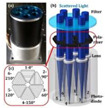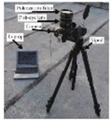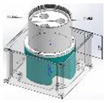Table 1.
Overview of various sensors.
| Sensor Classification | System Composition | Typical Sensor | Reference | Advantages | Disadvantages | |
|---|---|---|---|---|---|---|
| Point source polarized light sensor | Basic point source sensor | Photodiode, polarizer, filter |

|
[3,4,5,18,31,32,33,34,35,36,37] | Simple structure, small volume, and cost. | It is easy to be disturbed by the external environment and has poor stability. |
| Point source sensor for integrated navigation | Polarized light navigation, micro inertial navigation, Global Positioning System (GPS) navigation |

|
[38,39,40,41,42,43,44,45,46,47,48,49,50,51,52,53,54,55,56] | Improve navigation performance and accuracy, and overcome the disadvantages of single sensor. | High production cost and large volume. | |
| Imaging polarized light sensor | Time-sharing imaging | Camera, turntable, polarizer |

|
[57,58,59,60,61,62,63,64,65,66,67,68,69,70] | Simple production and low cost. | The orientation error and assembly error are large. |
| Fractional amplitude imaging | Camera, polarization beam splitter, delayer |

|
[71,72,73,74] | Multidirectional polarization angle image detection is available. | Due to the large volume and different imaging brightness of different detectors, the orthogonal error of polarizers is inevitable. | |
| Aperture splitting | Light field camera is usually used |

|
[75,76,77] | It can image polarization images of multiple polarization states of the target scene in real time. | The requirements for lens and optical structure are high, and the relative sensitivity of noise leads to large polarization image error. | |
| Focal plane light splitting | Charge coupled device (CCD) camera, complementary metal oxide semiconductor (CMOS) camera, pixelated polarization array |

|
[78,79,80,81,82,83,84,85,86,87,88,89,90,91,92,93,94,95,96] | Good real-time performance, high precision, and high integration. | High fabrication cost and nanowire error lead to inconsistent optical response of polarizers in different directions. | |
